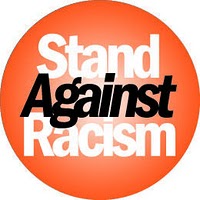
newsday.com
Miguel Zenón feels his way to jazz Nirvana
By ED MORALES
Saxophonist Miguel Zenón has made his mark in jazz by translating the traditional Afro-Caribbean rhythms in his head into freer forms of expression. On his 2005 album, “Jíbaro” (Marsalis Music), he used the “feel” of traditional Puerto Rican music as a creative space to play a kind of jazz so innovative that he won Best New Artist in a JazzTimes poll. The New Yorker’s new album, “Awake,” (Marsalis Music) takes the concept even further.
“If you start with the basic rhythmic structure of bomba, but you don’t necessarily use the drums or play the rhythm explicitly, you’re composing with a bomba feel,” said Zenón, whose quartet will be playing at the Jazz Standard (212-576-2232) Tuesday and Wednesday. “A lot of the stuff we did on this record is coming out of an Afro-Cuban feel, a Puerto Rican feel, or even a flamenco feel.”
Listening carefully to “Ulysses in Slow Motion,” inspired by the multilayered narrative technique of the James Joyce novel, you might be able to pick out the Puerto Rican rhythm bomba sicá. “Third Dimension” has the feel of a 12/8 Afro-Cuban rhythm, and “Camarón,” dedicated to flamenco legend Camarón de la Isla, takes off into an unexplored galaxy of rhythmic cycles.
“‘Camarón’ has that Arab and African thing going on,” said Zenón, who came to the U.S. from his native Puerto Rico to study at Berklee College of Music in Boston. “You can hear all the Spanish music that came with the colonization of Latin America in rumba and jíbaro music.” Another song has a more arbitrary inspiration. One day as Zenón was channel surfing, he was entranced by a Catholic Mass and adapted a Gregorian chant as the repetitive motif for “Santo.”
“Awakening Prelude” and “Awakening Interlude” represent the state of mind Zenón was in as he tried to find direction as a budding young jazz star. He used a string quartet to “color” the proceedings, which culminate in a free-jazz explosion inspired by Ornette Coleman and John Coltrane’s experimental phases.
From time to time, he asked longtime collaborator Luis Perdomo to switch from piano to Fender Rhodes, giving some of the tunes an electric fusion sound. Zenón feels a great camaraderie with his quartet, made up of Perdomo, Hans Glawischnig on bass and Henry Cole on drums.
“Hans and I played with David Sánchez’s band,” Zenón said, “and then with Luis we played in [the late] Ray Barretto’s band.”
Zenón credits Sánchez and Boston-based pianist Danilo Pérez as “shining examples of Latino musicians who were making it in the jazz world.” Barretto was also an important mentor, since Zenón had grown up listening to his salsa records and was stunned by the master percussionist’s encyclopedic knowledge of mainstream jazz.
But like Barretto, Zenón had roots in playing dance music. “In Puerto Rico I played in all kinds of bands that played salsa and merengue,” Zenón revealed. “That’s how I saved the money to come to the U.S. We used to play El Gran Combo tunes. Half the band was my friends – we were around 15 – and the other half was my friend’s father and his friends from the hospital where he worked. They were all, like, 50,” he chuckled.


